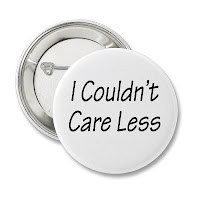Mom Blogging for Dummies Part 2: Privacy and Popularity
When
discussing what makes mom blogging stand out in Chapter 1 of Mom Blogging for Dummies author Wendy Piersall states:
Mom bloggers –especially mommy bloggers who
write about parenting –are in a position to disclose highly personal subject
matter about themselves and their families. It is this personal, from the heart
writing that allows readers to so deeply connect with the blogger. But there
are things mom bloggers should all do in this day and age to ensure their
families are kept from embarrassment or worse, harassment, threats, and
personal attacks (pg 4).
As discussed in our previous post, this guide book
overwhelmingly focuses on the business side of blogging, in my opinion to the
detriment of the personal aspects of this type of public discourse, but
Piersall isn’t neglectful and does touch on issues regarding privacy (mostly in
Chapter 3 “Finding Your Voice and Niche) in the following ways:
Personal Branding:
“Bloggers with strong platforms and strong
personal brands are the most sought after personalities in the blogosphere”
(Piersall ch 1, pg 6).
In the guidebook emphasis was put
on voice and content with regards to the actual writing. In my opinion the
writing should be the most important element of anyone’s blog. Unfortunately
not as much attention was given to actual writing technique, promoting the
belief that good writing is just a natural ability for some people. Piersall
seemed to be looking at blog writing again through a business perspective, the
main purpose being to attract readers or other brand partnerships and tying in intimate
personal sharing and taking risks with popularity. However, she does nod to the
importance of bloggers thinking about what their boundaries should be.
Blog readers typically want to know the
person behind the words. They care about not only what the blog says, but who
says it. So blogging becomes a balancing act between finding ways to share
personal stories while setting boundaries about the things you refuse to share
publicly. Indeed, even the bloggers who seem to bare it all have certain topics
they won’t discuss (Piersall ch 3, pg4).
Distinction between mom blogging and mommy blogging:
A mom blogger is simply a mom who blogs; a
mommy blogger writes within a genre of blogs about parenting and family
life…Here’s a practical distinction between mom blogging and mommy blogging:
How much of your motherhood and family life do you want to share on your blog?
(Piersall ch 1, pg 7-8).
Piersall
makes this distinction in order to address her intended audience and clarify
that this book is not just for “mommy bloggers”, moms that blog with a focus on
parenting, but for mom’s who blog period (and in particular want to turn
blogging into a means of income). This sort of explains her light touch on
privacy concerns as some topics can be a lot less personal, lifestyle blogs
versus political or career focused for example. In this case she has put mommy
blogging on one end of the personal privacy spectrum.
Work/Life Balance:
…the personal nature of blogs makes it
nearly impossible not to write about the people and things that are a part of
your life. It also can make it tricky when you want to make a business out of
the parts of your life that are typically shared only privately with friends
and family. Some of the harshest criticisms leveled at mom bloggers revolve
around the ethics of sharing stories about family members –especially children
–who don’t (or can’t) give explicit permission to appear on your blog (Piersall ch
3, pg 2)
This would have been a great opportunity for some
elaboration. I would have loved if Piersall had taken some space to acknowledge
with some specificity what critics have said and possibly included a real life
example as she does with most of her other main points. I don’t think bringing
up these concerns is enough if readers don’t know what they are. Additionally,
Piersall has stated that personal sharing is an ethical issue yet doesn’t include
anything about it in her “Mastering Blogging Ethics” chapter, which is
something I will discuss further in a subsequent post.
Public/Permanent Nature of the Web:
The permanence of blogging puts a different
perspective on cute and funny stories about children as they go through stages
such as breastfeeding, potty training, and social struggles with their peers.
There’s no way of knowing what children will think of these writings when
they’re 16 years old and in the midst of teenage angst. Or how a spouse will
feel about an argument you had (Piersall ch 3, pg 3).
It seems as though Piersall’s view on the main problems with
personal sharing have to do with the permanence of online publications and a
false sense of anonymity on the web. She does talk about keeping in mind the
feelings and wishes of those we write about but fails to address whether we
have the right to publicly write about them in the first place.
I think
had Piersall provided more detailed and expansive information on privacy the
guidebook would have been more well-rounded. The overall point seems to be that
yes, showing your personality/personal brand (aka sharing personal information)
is beneficial when trying to attract more readers and gain popularity but you
should still be cautious. However, there is little instruction on how to
actually take caution. I think at the very least an inclusion of some
discussion on how or what personal information about bloggers and their
families can or should be protected is necessary to balance out the guide.
Otherwise readers are likely taking away that everyone else’s needs (viewers/advertisers/sponsors/etc.)
are more important and should be prioritized above all else in order to have a
successful blog.




Comments
Post a Comment